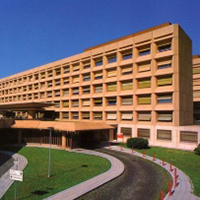 Smart Citations
Smart CitationsSee how this article has been cited at scite.ai
scite shows how a scientific paper has been cited by providing the context of the citation, a classification describing whether it supports, mentions, or contrasts the cited claim, and a label indicating in which section the citation was made.
Emergency Key Performance Indicators in the Italian region Friuli Venezia Giulia
Key Performance Indicators (KPI) regard key areas of a particular service which needs to be evaluated. Within the health system, they represent specific and measurable elements and are based on standards generally set by the scientific literature. KPI can be used to assess performances in different areas and achievement of goals. To develop and calculate a set of KPI in the Italian Region Friuli Venezia Giulia (1 million inhabitants) as an audit tool for the regional Emergency healthcare system, with a focus on three timedependent conditions: trauma, acute myocardial infarction, and stroke. To develop the set, a modified Delphi process was applied among Emergency care experts in Friuli Venezia Giulia. Then, the indicators were calculated from anonymous administrative health databases (Emergency Medical System, Emergency Department, hospital discharge, cardiac catheterization laboratory). Databases could be linked with each other at the individual level through a univocal stochastic key. Sensitivity analyses were conducted where different results were expected using different databases. Sixty-one indicators were calculated for the year 2018. Five indicators were summary descriptive measures, 10 were outcome measures, the others were process indicators; 20 were specific on acute myocardial infarction, 12 on trauma, 4 on stroke. Values for some indicators varied depending on the data source. These KPI provided new and interesting information and are used for periodic audit purposes in Friuli Venezia Giulia. Higher quality, completeness and richness of the administrative databases should be promoted to further increase the value of the indicators.
How to Cite
PAGEPress has chosen to apply the Creative Commons Attribution NonCommercial 4.0 International License (CC BY-NC 4.0) to all manuscripts to be published.

 https://doi.org/10.4081/ecj.2020.8910
https://doi.org/10.4081/ecj.2020.8910





